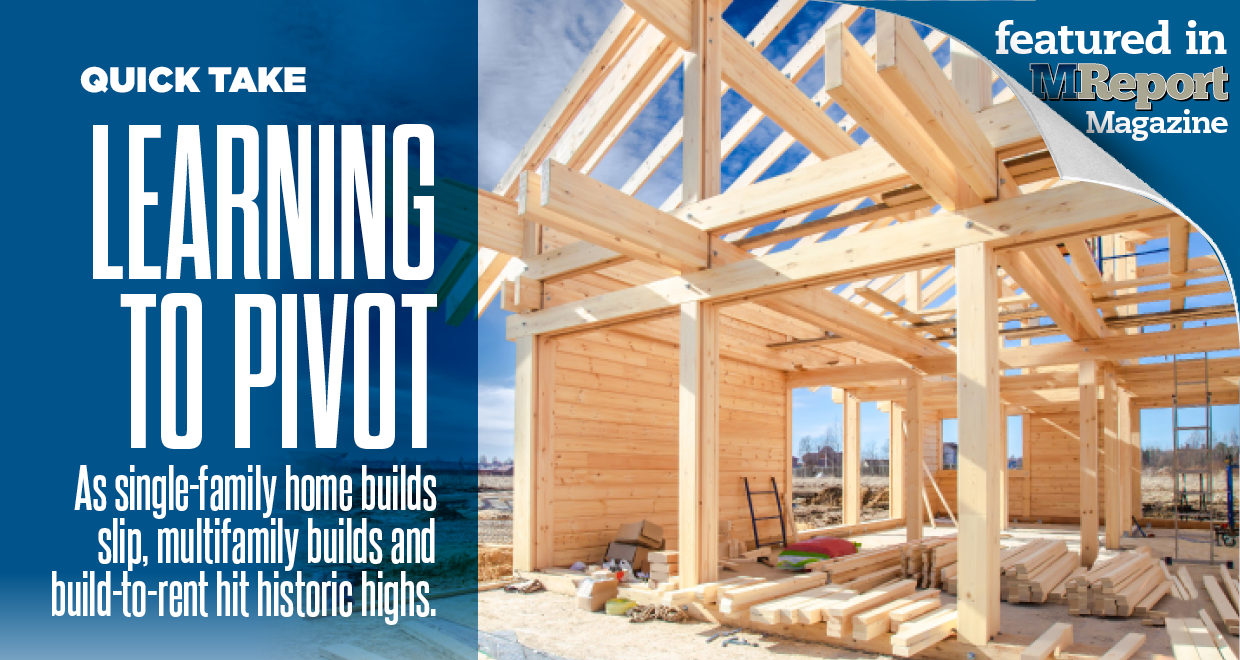
This piece originally appeared in the October 2022 edition of MReport magazine, online now.
The ongoing housing shortage has continued to dominate national headlines. Demand remains high, especially among millennials who plan to buy homes in the next two years. However, March and April saw declines in both mortgage applications among prospective buyers and building permits among builders. In fact, the number of permits slipped 3.2%, which offers insight into the months ahead and continued shortages.
Some economists believe these declines are a result of rising interest rates, record high home prices, and economic uncertainty, leading to lower consumer confidence. These factors certainly shouldn’t be ignored, but they are only part of the problem.
Consumers across all generations are still looking to buy homes or—at the very least—relocate to new areas, fueling demand for residential construction. It just may not be in the form of single-family builds.
Multifamily builds of five units or more increased by 17% in April—the highest jump since 1986. Most of this growth is taking place in the South, accounting for nearly half of all home builds. The reason is simple—the Southern region shows the strongest population growth. More people mean more housing.
Another potential factor leading to a surge in multifamily projects is rising home prices. Many individuals, especially younger buyers, are being priced out of homes. As a result, more people looking to relocate are considering renting versus buying—at least for the short term. Additionally, consumers who can afford higher home prices but need to relocate sooner may opt to rent as housing shortages persist.
In addition to multifamily builds, the industry is also seeing an uptick in the build-to-rent market. As home prices continue to see double-digit gains with household incomes failing to keep pace, the build-to-rent market is expecting explosive growth.
Largely driven by millennials and younger adults, this trend follows as many individuals are looking to transition out of apartments and into homes in family-oriented communities but still face massive student loan debt. As a result, economists are predicting nearly $40 billion in new developments through mid-2023.
Still, these builders and investors are facing the same challenges as single-family builders—financing.
Between rising construction costs, supply chain issues, and labor shortages, builders across all real estate types are struggling to keep up with demand. Unfortunately, traditional lending is creating yet another challenge, delaying construction and slowing builds.
As home prices remain high and consumers look to other options, traditional lenders are moving too slowly. There simply isn’t enough housing in areas where consumers are flocking to, and builders’ and investors’ ability to satisfy housing demands are hindered if they’re unable to quickly access capital and financing.
A new approach is critical. Real estate investors and developers need short-term financing that is consistent and competitive—and they need it quickly.
To do so, lenders must speed inspections and the funding approval process, allowing builders to start building quickly and capitalize on current demand.
Additionally, by shortening the timeline from weeks to just a few days, there is a potential to solve the housing shortage, which could lower home prices and address affordability challenges in areas seeing massive population growth.
Even with multifamily builds and build-to-rent on the rise, rent is surging to record levels. Realtor.com reported that rent climbed to $1,827 in April, up over 16% from last year.
With quicker financing and a fresh approach, the industry can tackle the ongoing housing shortage as well as deteriorating affordability. Not only will this benefit consumers, but also the builders and investors, as well as local economies.

 theMReport.com Your trusted source for mortgage banking news
theMReport.com Your trusted source for mortgage banking news









